
Vintage fashion is finally having its moment in the sun. Or, that is, the bright lights of cable reality TV. Two shows that premiered this season—Bravo’s “Dukes of Melrose” and Smithsonian Channel’s “L.A. Frock Stars”—each focus on a high-end vintage boutique located near Hollywood and patronized by big-name celebrities.
When “American Pickers” debuted on the History Channel in 2010, it opened the floodgates for piles of rusty junk to come crashing through, via copycat shows on picking, pawning, selling at flea markets, and auctioning storage spaces. Could women’s clothing become the next big televised picking obsession?
It’s easy to see why this stuff appeals to pickers who don’t want get their hands dirty: It’s a more delicate, refined way to hunt for valuable artifacts. These two shops are not dealing in garden-variety “thrift-store clothing,” as Raymond emphasizes, but curated vintage that, on the high end, includes one-of-a-kind designer pieces and museum-quality historical garments. Their picks are so beautiful that they have ended up on the elegant shoulders of Madonna, Angelina Jolie, Dita Von Teese, Jennifer Lopez, and Nicole Kidman—all of whom wanted to create a red-carpet image that no one else could imitate.

Top: Doris Raymond, who has owned The Way We Wore for 32 years and stars in “L.A. Frock Stars,” examines a clutch purse. Courtesy of Smithsonian Channel. Above: Cameron Silver, who opened Decades Inc. 16 years ago, co-stars in “Dukes of Melrose.” Photo by Douglas Friedman, courtesy of Bravo.
As it turns out, “Dukes of Melrose’s” Cameron Silver, founder and co-owner of Decades, Inc., is good friends with “L.A. Frock Star’s” Doris Raymond, founder and owner of The Way We Wore. Both say it’s completely random that their two shops, less than 3 miles apart in same Los Angeles neighborhood, ended up on TV at the same time.
Raymond, who has owned her boutique for 32 years now, calls it “a confluence that confirms the universal popularity” of vintage clothing. “Vintage in general is a trend now. That’s why you see the misuse of the word vintage in contemporary clothing because there is such a draw to it,” she says, referring to the fact that big corporations like Target and H&M, and online retailers like ModCloth, are selling “vintage-style” clothing mass-produced in Asia.
“It is strange that you’ve got these two shows happening, and it’s two stores that have mutual admiration of each other,” says Silver, who adds that he introduced Katie Holmes to The Way We Wore. “But I guess it’s how trends happen, how all of a sudden there’s a certain color or a certain silhouette on the runway. It’s the same thing. There just happens to be a moment.”

Left, a 1952 gown designed by Cristobal Balenciaga for his Spanish label Eisa was originally owned by American socialite Anne Moen Bullitt. Right, a 1970s chiffon gown by Bill Blass plays with ombre using sunset shades. Via Decades Inc.
According to Silver’s 2012 book, “Decades, A Century of Fashion,” the “vintage moment” started at the turn of the new millennium, which seemed to put the fashion world into a reflective mood. Everything and anything from the past 100 years of fashion history became new again. “One of the things I say in the book is the first decade of the 21st century was the Decades’ decade because everything was vintage-inspired,” he explains. “And every celebrity wanted to wear vintage.”
“I like to get celebrities out of their comfort zone. You don’t have style until you’re on the worst-dressed list.”
The second episodes of both “Dukes of Melrose” and “L.A. Frock Stars” focus on the chaos in the stores around awards season, which starts in September with the Emmys and reaches its height in February with both the Grammys and the Academy Awards. Even though “awards season” just ended weeks before the shows debuted in March, both were filmed a year ago, and hence, everyone is freaking out about last year’s events. At Decades, the stylist for “Bridesmaids” star Melissa McCarthy tasks Silver with dressing the actress, and he has a gown custom-made for McCarthy, which she wears to the Oscars.
Then his friend, actress Rachael Harris, who starred in “The Hangover,” does come into the store demanding a dress for the Independent Spirit Awards, and ends up walking off borrowing the architectural dress a Decades employee was wearing that day, free of charge. This makes Silver’s profit-minded business partner Christos Garkinos cringe. Garkinos is busy dressing his friend, actress Garcelle Beauvais, in a feather-decked modern gown for an Oscars after-party. Then, Beauvais falls ill the night of the event.

Linda Ramone tries on a beaded 1980s Victoria Royal dress at The Way We Wore while stylist George Kotsiopoulos watches. She wore this dress to the 2012 Grammys. Via the “L.A. Frock Stars” Facebook page.
Over at The Way We Wore, superstar stylist Mel Ottenberg visits the shop looking for at least three different outfits for Rihanna to wear while arriving, performing, and presenting at the Grammys. Raymond presents him with a Gaultier gown with a suggestive op-art dot pattern and two sleek 1990s Gianni Versace pieces, as well as a silver Native American chaise belt. When Lady Gaga’s stylist calls at the 11th hour looking for Grammys options, Raymond goes to her office and pulls two 1960s aluminum Paco Rabanne dresses worth $50,000 a piece, a Chagall-themed beaded jumpsuit by Versace himself, and a shiny Druid-like purple jumpsuit with hood by eccentric French nobleman Jean-Charles de Castelbajac. (Gaga wore a dress from the shop, a lime-green 1980s Versace, while touring Asia in 2012.)
“The ‘whoa’ factor is what I look for, pieces that make your heart skip a beat.”
Meanwhile, non-celebrity Sarah Jones, whose boyfriend is up for the best-documentary Oscar, spends hours and hours trying on vintage gowns at The Way We Wore. Linda Ramone, wife of late punk legend Johnny Ramone, walks into the store and decisively chooses a short 1980s Victoria Royal dress with silver beads for the Grammys. In the end, Ramone is the only one who wore a piece from Raymond’s store to an awards event that month.
Still, if you define “vintage” as strictly as Raymond does, meaning a garment at least 18 years old, then it is quite rare to see a celebrity on the red carpet in vintage, perhaps only one or two A-listers per event. Even Julia Roberts’ celebrated black and white Valentino gown, which she wore when she accepted the 2001 best-actress Oscar for “Erin Brockovich,” was from 1992, only nine years old.

Burlesque star Dita Von Teese, a vintage fashion icon who is a regular customer at The Way We Wore and Decades Inc., tries on a dress. Via Smithsonian Channel.
There have been true vintage moments at the Oscars for example: Renee Zellweger’s yellow 1950s Jean Dessès gown in 2001; Jennifer Lopez’s mint-green 1960s Valentino (which the designer first created Jacqueline Kennedy Onassis) in 2003; Lopez’s moss-green Dessès gown and Reese Witherspoon’s a ribbon-decked 1955 Dior gown that once belonged to royalty in 2006; Calista Flockhart’s Grecian color-block 1970s Valentino in 2008; Penelope Cruz’s wedding-gown-like 1950s Balmain in 2009; and Marisa Tomei’s 1950s Charles James mermaid gown in 2011. Yet these are a small percentage of the couture on the red carpet. (Click to read Silver’s favorite red carpet moments.)
“How can I compete with Armani and these brands that have back-door deals going on?” says Silver, who toured the Joseff of Hollywood costume-jewelry vault with Collectors Weekly in 2012. “I’m always thrilled when anyone who’s famous buys anything from the store when they get couture for free.”

Left, a 1970s Bob Mackie dress with sequined stripes is perfect for the disco. Right, a 1980s band-leader jacket by Turkish-born designer Rifat Ozbek is adorned faux ivory sticks. Via Decades Inc.
“Yeah, I cannot compete with the big guys,” Raymond says. “If the major design houses are throwing $10,000 to $50,000 gowns to A-listers, I can’t do that. So the stars are less inclined to want to come in and actually invest money in something that technically they can only wear once—which, to me, is one of the stupidest things in the whole world.”
Often, during awards season, celebrity stylists come to Silver or Raymond in a panic because their client’s haute couture gown fell through. “The traumas that happen can be anything from pieces getting held up at customs from France or Italy to things not being the right color,” Raymond says. “It could be that the fit is completely wrong for whatever reason or that the person changed their mind. There’s any number of things that can happen that makes it a crisis for the poor stylist.”

R&B singer Kelis tries on a 1970s dress Nolan Miller created for Gladys Knight. Via the “L.A. Frock Stars” Facebook page.
Both Raymond and Silver demur and say that their businesses, and their shows, are not about celebrities. “Truthfully, I treat every client like a celebrity,” Silver says. “I’m a big believer in the democratization of glamour, and everyone should walk like there’s a red carpet under their feet, with that kind of confidence.“
But the cable networks are clearly leveraging the shops’ star power: The first episode of “L.A. Frock Stars” features burlesque star Dita Von Teese prancing around the second floor of The Way We Wore topless in 1950s Christian Dior underpinnings. A vintage fashion icon, Von Teese is a regular customer at both stores, and appears on both TV shows. Raymond says she is such good friends with the performer that she’ll call her when great pieces come in. In the second “Frock Stars” episode, pop-music stars Kelis and Natasha Bedingfield close down the shop trying on dresses. Meanwhile, Silver tells me that Decades helped propel Nicole Kidman to the status of style icon.

Christos Garkinos, co-owner of Decades, shows actress Garcelle Beauvais, star of “NYPD Blue,” a ruched 1960s Galanos gown. Via Bravo TV.
“It was this mutually beneficial relationship in the sense that she was getting the best from Decades,” Silver says. “And it was really singling her out from all the other actresses because she was wearing things people had never seen before. She’s wearing Azzaro. She’s wearing Ossie Clark. She’s wearing Rudi Gernreich. Of course, it benefited Decades because of the association. But I like to think it propelled her fashion kudos. The fact that she was wearing these pieces that were so interesting and inspiring and you could not pinpoint elevated her to a fashion icon.”
“He has a respect for these things, so I know that he didn’t just eat a bag of buttered popcorn.”
Silver, who has a personal collection of men’s vintage and couture clothing, clearly has a flamboyant sense of style. When Rachael Harris comes to the store, she deadpans to the camera, “Am I afraid that Cameron will put me on the worst-dressed list? Yes.” Silver takes this in stride. “I like to get celebrities out of their comfort zones,” he tells me. “You don’t have style until you’re put on the worst-dressed list.”
Anyone interested in vintage should attempt to step outside his or her comfort zone, Raymond says. “I would say to people who are curious about vintage to be brave and to try things on that you normally wouldn’t think are ‘you’ to get a sense of what suits you. In a vintage clothing store, you have more to choose from than you would in a traditional department store. So I say be brave, and don’t be a weenie.”

In October, Miley Cyrus wore a vintage Moschino skirt from the 1990s from The Way We Wore on “The Tonight Show with Jay Leno.” Via NBC.com.
Many people think that vintage only works for very small women, but these L.A. shops have dressed Amazonian celebrities like Adele and Kelis. The key to dressing a celebrity is finding their body image issues and working with those, Silver says. In fact, he insists it’s not as much fun to dress models like Karlie Kloss or Chanel Iman who can pull off anything.
“I love working with people when it’s not so perfect; I like a little bit of a challenge,” he says. “There’s the idea of dress your decade. A curvier girl might look great in the ’50s; for somebody very flat-chested, all the ’60s silhouettes work. If you’re narrow-shouldered, sometimes a ’40s piece works because it builds up your shoulder.”
Aside from celebrities and their put-upon stylists, clientele for the stores includes costume designers for television, film, and theater. On “L.A. Frock Stars,” Lou Eyrich comes in to pick out several costumes that appeared in an episode of “Glee,” for example.

On “Dukes of Melrose,” socialite Patricia Kennedy shows Cameron Silver a 1980s Givenchy that she once bought for more than $50,000. Later Silver learned that the gown was designed by the late Alexander McQueen. Via the “Dukes of Melrose” Facebook page.
Another draw of these shows are the jaw-dropping prices. Socialite Patricia Kennedy, former girlfriend of Lee Iacocca, comes into Decades offering to sell two 1980s-era Givenchy gowns, one by the late Alexander McQueen and the other inspired by Chagall, for $10,000 apiece. When Garkinos blanches, she calmly explains that she bought them new for about $55,000 apiece. (Likewise, Silver rolls his eyes when Garkinos hosts a massive shoe sale offering recent Louboutins and Manolo Blahniks for $150 a pair.)
While Decades often has museum-quality pieces in the $40,000-$50,000 range, he says a middle-class woman could come in and invest a dress that’s $125 dollars, “so you buy two or three less H&M pieces. I’m a big proponent of not making fashion so disposable. Buy quality stuff and build a nice collection.”

Inside Silver’s high-end vintage section of Decades Inc. Via the “Dukes of Melrose” Facebook page.
Raymond estimates that her collection is worth somewhere between $15 and $20 million. Prices on the first floor range from $20-$750, while customers looking for higher-end vintage have to request access to the second floor, which is where pieces from around $650 to $50,000 in price reside. Raymond’s most prized finds are kept locked in her office, “her little piece of heaven,” which she pilfered when pulling for Lady Gaga.
“On the second floor, I have the pieces that, in all honesty, if they don’t sell, it’s no heartbreak to me.” Raymond says. “When you called, I was unpacking a stash of things that I had acquired in my last shopping trip. Each piece, you take out and you go, ‘Whoa!’ It’ could be the cut of the fabric. It could be a simple shoulder design. It could be hardware that’s used in the cleavage. But to get the ‘whoa’ factor on these things, it’s what I look for. Upstairs are pieces that really make your heart skip a beat.”

Clarisse Coudert, the wife of media mogul Condé Nast, wears a Fortuny Delphos tea gown in 1917. Via WikiCommons.
For example, she has a rare Mariano Fortuny y Madrazo gown, from between 1907 and 1950, done in his unique “Delphos” pleating style. “To this day, they haven’t figured out what technique, what process he used to create those pleats in the fine silk that he uses in his Delphos and Peplos styles. You look at the beauty of classic silhouette because it goes back to the Grecian days, and you look at the beauty of him weighting it with Italian Murano glass. Then you look at the simplicity of storage by just twisting it so that the pleats stay intact—and you’re in awe that this man over a hundred years ago came up with this.”
“I’m a big proponent of not making fashion so disposable. Buy quality stuff and build a collection.”
Raymond explains that customers aren’t allowed upstairs alone because they might accidentally damage her greatest finds. “There are ways to move things on the rack that won’t stress the shoulders,” she says. “We have one wall that’s all devoted to 1920s and ’30s French, and every piece is in excellent condition. If someone has a Tiffany ring with prong settings, that could easily destroy some of the clothing. We like to oversee when people go upstairs just to make sure that we protect our kids.”
Most people are not allowed into Raymond’s office, but she will make exceptions for, say, Calvin Klein designer Francisco Costa. “He has a respect for these things, so I know that he didn’t just eat a bag of buttered popcorn,” she says. “I know that he has care and an affinity for these pieces. The office is only shared with people that I know speak my language.”

Garkinos and Silver have it out, as usual. Via the “Dukes of Melrose” Facebook page.
Finances are a big piece of the dramatic hook of “Dukes of Melrose.” Silver, whom Bravo dubs the “king of vintage,” opened his high-end vintage boutique Decades Inc., in 1997. In the early 2000s, Garkinos, called “the Robin Hood of fashion,” opened his designer consignment business Decades Two in the same building. In 2011, the two merged their businesses. Bravo plays up Garkinos’ anxiety about cash flow, to the point viewers have to wonder how Decades stays afloat. Silver is portrayed as a child-like free spirit with no regard for money.
“It’s never that bad,” says Silver, who claims Garkinos coaxed him into doing TV in the first place. “We just have very different ways of doing business. Consequently, that’s where we don’t always see eye to eye. I’m more about long-term branding and customer experience and not so much about the quick dollar. My whole thing is ‘Stay on brand, stay on brand, stay on brand,’ and I don’t know if Christos always sees it that way. He likes frenzy and chaos. I’m super meticulous and much more calculated in terms of the long-term benefits for the brand. That’s probably one of the reasons why it’s been 16 years and Decades Inc. is still here.”

Doris Raymond (center) is flanked by her staff and fellow “L.A. Frock Stars” cast members (from left) Jascmeen, Shelly Lyn, Kyle, and Sarah. Via the “L.A. Frock Stars” Facebook page.
Raymond, on the other hand, spent many years considering various offers to do reality shows. But she says she refused to participate in anything that would focus on interpersonal drama between her and her staff, four of which are cast members in the current season. “Then this New Zealand company that specializes in documentary television—NHNZ or Natural History New Zealand—communicated that they wanted to create a show that was above the bar, no catty behavior,” Raymond says.
“I told them that I hesitated to sign up with anyone because I didn’t like what was on television right now and I felt like the stories were in the clothing,” she continues. “Then the Smithsonian Channel took a risk by agreeing to take the show on because it’s not your standard reality show. It’s really about the history of fashion and the wonderful people who respond to it. The clothing, they’re the stars.“

Left, a black chiffon dress with gold-lamé leaf design is one of Raymond’s 1920s finds. Right, Raymond offered this aluminum 1960s dress by Paco Rabanne to Lady Gaga for the 2012 Grammys. It is valued at around $50,000, and Raymond has two. Via The Way We Wore.
While “L.A. Frock Stars” is less polished than “The Dukes of Melrose,” it’s fun to watch Raymond and her employees do happy dances about their finds, particularly the rare items from the 1920s and 1930s, pieces that were touched by the era’s major designers like Paul Poiret, Madeleine Vionnet, Elsa Schiaparelli or Coco Chanel. It’s a wonderful education as Raymond meticulously runs her hands along seams to make sure the stitching is correct for couture or the fasteners match the era. She raises questions about alterations, which can detract from a garment’s value, and she asks about authentication to make sure a piece is not a fake.
“It’s kind of like being a CSI or a forensic: There are clues to dating things, but a lot of it is intuition as well,” Raymond says. “I was given a heads up a few years ago that there are counterfeit Vionnets floating around, because Vionnets are selling in the $50,000 to $120,000 range. So of course that’s going to motivate a thief who is skilled at sewing. Labels can easily be sewn into garments, and so a label doesn’t mean that a garment is what it appears to be.”

Sara Mehrkhast, as consulting design director for Paige Denim, looks at floral prints in Raymond’s designer inspiration room. Via the “L.A. Frock Stars” Facebook page.
Raymond also shares her in-depth fashion knowledge with designers, who look to the past for inspiration for their upcoming lines. In a space next to the shop, Raymond has a room filled with millions of fabric swatches, cataloged in books, going back as far as the 18th century. Some are sort by era, while others by type of print, whether it’s flora or fauna. Top-notch designers from Victoria Secret, Michael Kors, Marc Jacobs, and Louis Vuitton have all taken advantage of this fashion-history archive.
Only about 5 to 10 percent of vintage stores in the country curate their clothes in the same manner that Decades Inc. or The Way We Wore does, Raymond estimates. Others, “they’ll either go into an estate and buy everything, or they’ll buy stuff at rag houses.”

Joy Deangdeelert Cho of the design blog Oh Joy! expresses her love for vintage handbags at Decades Inc. Via the “Dukes of Melrose” Facebook page.
That’s important, because to Raymond, not all old clothes were created equal. “I would say, across the board, vintage doesn’t have staying power,” Raymond says. “But classic vintage has staying power. There were trendy fashions throughout the decades, but if you are able to identify classic styles and silhouettes that suit your personality and fit you in a nice way, these are things that never go out of style and you can wear over and over again.
“And it’s a good investment because these things were made when people took pride in the products that they created,” she continues. “You’ll see details in clothing that designers can’t justify using today, like bound buttonholes or a zipper that is sewn by hand. When you teach yourself to identify the things that are elements of quality, you can invest in pieces that will last a long time and help the planet, too.”
(Find out more about these vintage-fashion reality shows at Bravo’s “Dukes of Melrose” and Smithsonian Channel’s “L.A. Frock Stars” pages. Follow the off-season adventures of the shops at the Decades Inc. and The Way We Wore blogs.)





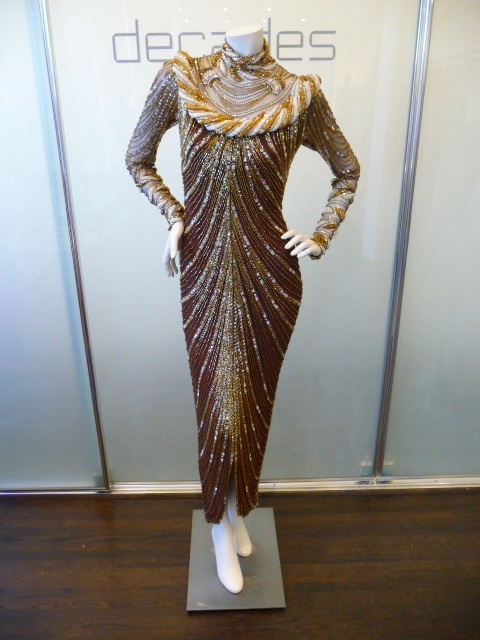
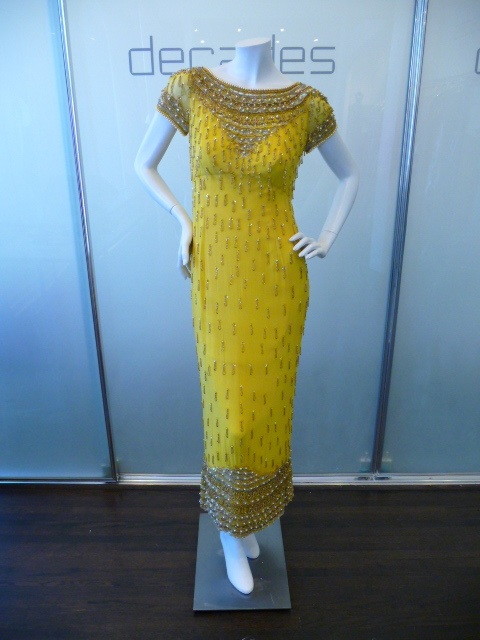









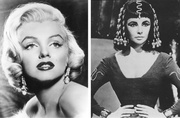
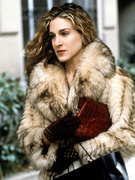 Should You Feel Guilty About Wearing Vintage Fur?
Should You Feel Guilty About Wearing Vintage Fur?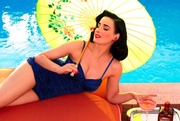
 Hidden Gems: Lost Hollywood Jewelry Trove Uncovered in Burbank Warehouse
Hidden Gems: Lost Hollywood Jewelry Trove Uncovered in Burbank Warehouse Should You Feel Guilty About Wearing Vintage Fur?
Should You Feel Guilty About Wearing Vintage Fur? Va-Va-Voom Vintage: Dita Von Teese on Burlesque, Cars, and Lingerie
Va-Va-Voom Vintage: Dita Von Teese on Burlesque, Cars, and Lingerie GownsNightgowns notwithstanding, the gown is the most formal and elegant form of…
GownsNightgowns notwithstanding, the gown is the most formal and elegant form of… Handbags and PursesEven though purses have been around since the 16th century and bags known a…
Handbags and PursesEven though purses have been around since the 16th century and bags known a… Womens Clothing“Clothes make the man,” said Mark Twain. “Naked people have little or no in…
Womens Clothing“Clothes make the man,” said Mark Twain. “Naked people have little or no in… Mari Tepper: Laying it on the Line
Mari Tepper: Laying it on the Line Nice Ice: Valerie Hammond on the Genteel Charm of Vintage Canadian Costume Jewelry
Nice Ice: Valerie Hammond on the Genteel Charm of Vintage Canadian Costume Jewelry How Jim Heimann Got Crazy for California Architecture
How Jim Heimann Got Crazy for California Architecture Modernist Man: Jock Peters May Be the Most Influential Architect You've Never Heard Of
Modernist Man: Jock Peters May Be the Most Influential Architect You've Never Heard Of Meet Cute: Were Kokeshi Dolls the Models for Hello Kitty, Pokemon, and Be@rbrick?
Meet Cute: Were Kokeshi Dolls the Models for Hello Kitty, Pokemon, and Be@rbrick? When the King of Comedy Posters Set His Surreal Sights on the World of Rock 'n' Roll
When the King of Comedy Posters Set His Surreal Sights on the World of Rock 'n' Roll How One Artist Makes New Art From Old Coloring Books and Found Photos
How One Artist Makes New Art From Old Coloring Books and Found Photos Say Cheese! How Bad Photography Has Changed Our Definition of Good Pictures
Say Cheese! How Bad Photography Has Changed Our Definition of Good Pictures Middle Earthenware: One Family's Quest to Reclaim Its Place in British Pottery History
Middle Earthenware: One Family's Quest to Reclaim Its Place in British Pottery History Fancy Fowl: How an Evil Sea Captain and a Beloved Queen Made the World Crave KFC
Fancy Fowl: How an Evil Sea Captain and a Beloved Queen Made the World Crave KFC
Great article. I especially liked the photo parade at the end, too! Here in Australia I see Dukes of M, but L.A.F.S. is not yet available. Look forward to it too.
As an aside, here in Australia the markets that used to be a source for collectibles have become venues for vintage clothing sellers new to the scene. Established sellers have shop premises in antique markets and up-market suburbs of the major cities. Major charities have solidified their market share too by getting savvy. Gone are the days when you could go to one favorite site and buy clothes by the kilo!
Hi Vetraio,
I’m so glad you enjoyed the piece. It looks like the first episode of “L.A. Frock Stars” is now on the Smithsonian Channel web site.
http://www.smithsonianchannel.com/site/sn/show.do?series=1002962
I was able to buy episodes on iTunes, too. Not sure if it’s the same for Australia, though.
~Lisa
Awesome article. It was detailed, informative & well written. Also, the slide show at the end, was great for “era” trivia. I think my score was 14 out of 16!